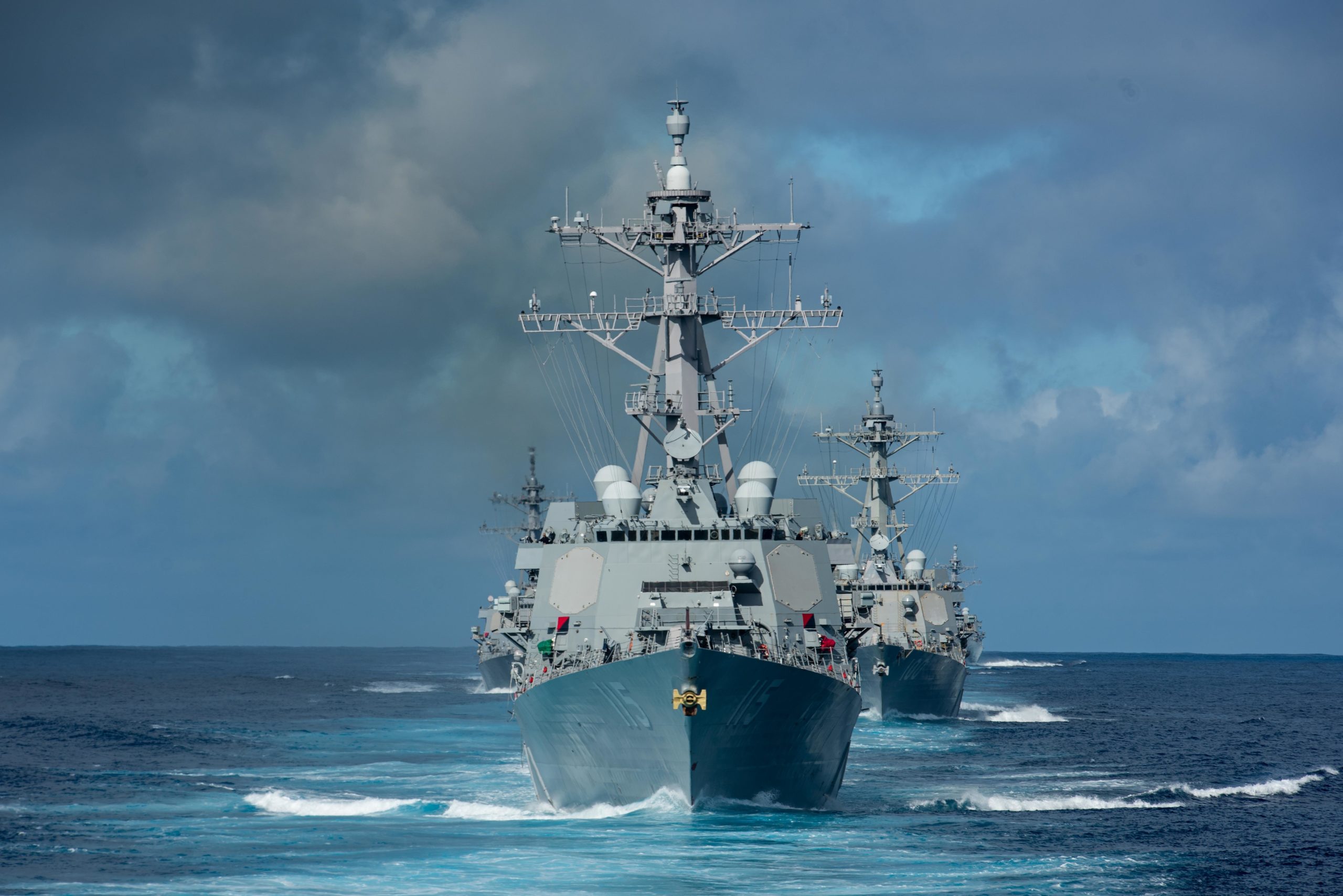Russia Conducts Navy Drills In White Sea
MOSCOW, July 21 (Reuters) – Russian warships conducted training drills in the White Sea to convoy and defend a caravan of ships, state-run TASS news agency reported on Sunday, citing the Russian...


Ships from Destroyer Squadron 23 transit the Pacific Ocean Jan. 22, 2020. DESRON 23, part of the Theodore Roosevelt Carrier Strike Group, is on a scheduled deployment to the Indo-Pacific. (U.S. Navy photo by Nicholas V. Huynh)
By James Stavridis (Bloomberg) The U.S. Navy is currently conducting one of the largest maritime exercises in recent history, with more than 60 nations taking part. Running through Feb. 17, the drills will cover waters off the Middle East, Southwest Asia, and East Africa. Known as both Cutlass Express 2022 and International Maritime Exercise 2022 — or IMX-CE22 — the war games will encompass nearly 10,000 personnel, 50 warships, and 80 unmanned systems.
The drills will include practicing sea control (the ability to dominate the oceans and deny opponents open access); maritime domain awareness (tracking all contacts on the surface, below the surface, and in the airspace over the seas); mine countermeasures (especially in the narrow waters of the Strait of Hormuz); and anti-air warfare (such as increasing tactical capability against supersonic missiles).
Of particular note, the exercises will use a wide-ranging flotilla of unmanned vehicles — surface, subsurface, and air. A drones group created for the multinational drills, Task Force X, will be led by the new U.S. Navy command focused on these emerging technologies, based in Bahrain. Vice Admiral Brad Cooper, the commander of the U.S. Navy’s Fifth Fleet, will lead the overall exercises, with deputies provided by the U.K. and Pakistan.
What is driving the timing and agenda of these massive drills?
Former Secretary of State Henry Kissinger once told me, when I was supreme allied commander of the North Atlantic Treaty Organization, that “every solution is merely the admission ticket to the next problem.” He meant that another crisis is always right around the corner — and he was right. Today we are seized, appropriately, by Russia and its potential conflict with Ukraine. But next in the queue may be Iran.
Indeed, even as the U.S. leads these drills, another trio of nations is conducting exercises themselves: Iran, China, and Russia. This group is drilling in the northern Indian Ocean, sending a signal to the West about their increasing level of diplomatic and military cooperation.
As Iran becomes emboldened by its growing relationship with China and Russia, its aggression in the congested waters of the Gulf and the Indian Ocean will likely increase. Thus one goal of Cutlass Express is to tamp down Iranian adventurism at sea.
The U.S.-led exercises are also a perfect setting to unleash the new task force focused on unmanned technology. The key will not only be using the most advanced systems without embarked humans but, more important, linking them together through a coherent, internationally accessible command-and-control system. Of all the U.S. Navy commands, the Fifth Fleet is the most experienced in coalition operations, and functions under the aegis of the highly multinational U.S. Central Command.
Refining links between the seagoing unmanned systems and the constellation of space assets overhead will be critical as well. The exercises will allow real-world testing on that essential element of facing Iran.
Additionally, the exercises can vastly improve the cohesion of U.S. military alliances. With large naval powers such as the U.S. and U.K. operating alongside tiny regional forces like those of Oman and the United Arab Emirates, the opportunities for combat role-playing scenarios are profound. The coalition will practice operational maneuvers designed to thwart potential Iranian activities across the Gulf and in the North Arabian Sea.
Paradoxically, the exercises may help the on-again-off-again nuclear talks between Iran and the other signatories to the 2015 deal. The negotiations appeared to be dead in the water last fall given the election of the hard-liner Ebrahim Raisi as Iranian president.
But over the past month or two, thanks to re-engagement by President Joe Biden’s administration, the conversations in Vienna have been looking more promising. Perhaps watching a huge maritime coalition operating on their doorstep may have a focusing effect on the minds of Iran’s leaders.
Clearly, these war games are not a panacea for facing a growing Iranian threat. But they are a kind of Olympics at sea for a vital coalition led by the U.S. in one of the most turbulent areas of the world.
This column does not necessarily reflect the opinion of the editorial board or Bloomberg LP and its owners.
By James Stavridis ( Copyright 2022 Bloomberg)


Join the 107,430 members that receive our newsletter.
Have a news tip? Let us know.Access exclusive insights, engage in vibrant discussions, and gain perspectives from our CEO.
Sign Up




Maritime and offshore news trusted by our 107,430 members delivered daily straight to your inbox.



Essential news coupled with the finest maritime content sourced from across the globe.
Sign Up